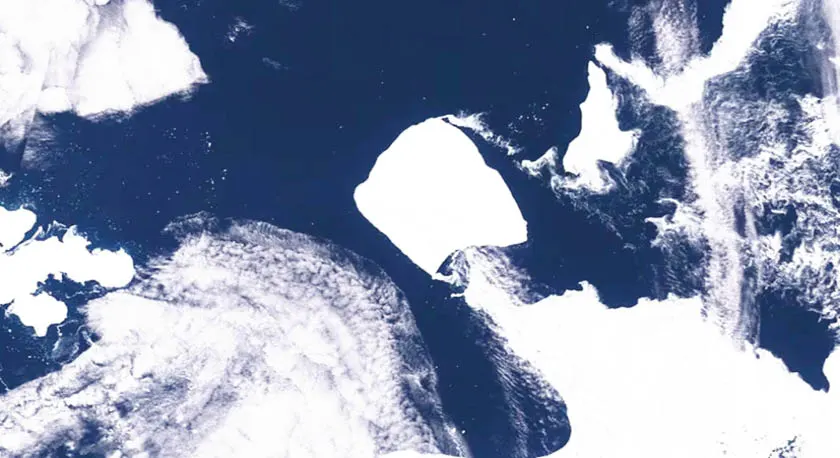The world’s largest iceberg is on the move for the first time in more than three decades, scientists said on Friday.
At almost 4,000 square km (1,500 square miles), the Antarctic iceberg called A23a is roughly three times the size of New York City.
Since calving off West Antarctica’s Filchner-Ronne Ice Shelf in 1986, the iceberg — which once hosted a Soviet research station — has largely been stranded after its base became stuck on the floor of the Weddell Sea.
Not anymore. Recent satellite images reveal that the berg, weighing nearly a trillion metric tonnes, is now drifting quickly past the northern tip of the Antarctic Peninsula, aided by strong winds and currents.
It’s rare to see an iceberg of this size on the move, said British Antarctic Survey glaciologist Oliver Marsh, so scientists will be watching its trajectory closely.
As it gains steam, the colossal berg will likely be launched into the Antarctic Circumpolar Current. This will funnel it toward the Southern Ocean on a path known as “iceberg alley” where others of its kind can be found bobbing in dark waters.
Why the berg is making a run for it now remains to be seen.
“Over time it’s probably just thinned slightly and got that little bit of extra buoyancy that’s allowed it to lift off the ocean floor and get pushed by ocean currents,” said Marsh. A23a is also among the world’s oldest icebergs.
It’s possible A23a could again become grounded at South Georgia island. That would pose a problem for Antarctica’s wildlife. Millions of seals, penguins, and seabirds breed on the island and forage in the surrounding waters. Behemoth A23a could cut off such access.
In 2020, another giant iceberg, A68, stirred fears that it would collide with South Georgia, crushing marine life on the sea floor and cutting off food access. Such a catastrophe was ultimately averted when the iceberg broke up into smaller chunks — a possible end game for A23a as well.
But “an iceberg of this scale has the potential to survive for quite a long time in the Southern Ocean, even though it’s much warmer, and it could make its way farther north up toward South Africa where it can disrupt shipping,” said Marsh.










